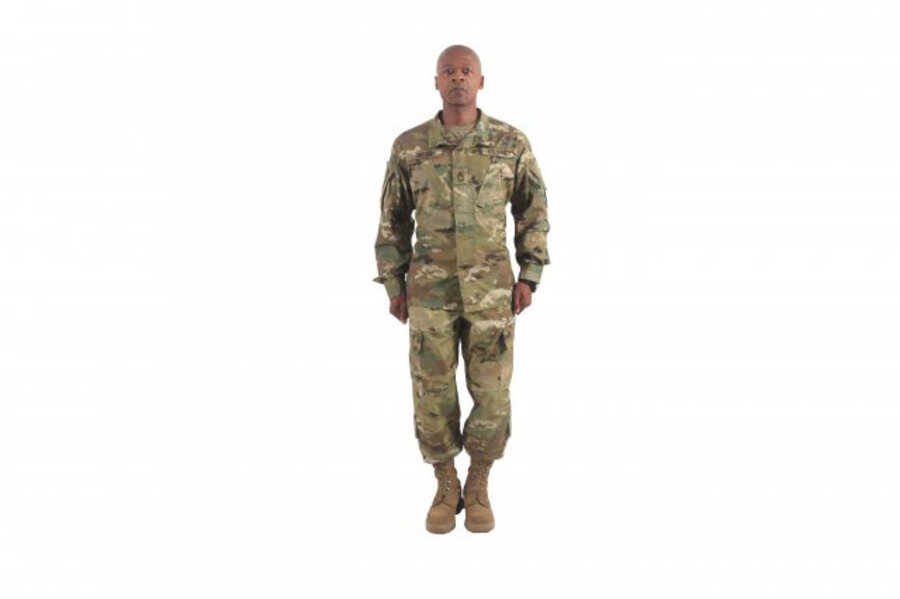How the Army is trying to make its uniforms more uniform
Loading...
| Washington
The US Army announced on Monday the upcoming debut of a camouflage pattern to be incorporated over the next four years, ultimately replacing the two patterns it currently uses.
The development of the Operational Camouflage Pattern caps a multi-year effort to redesign the camouflage worn by all soldiers. The effort began in 2009, when soldiers in Afghanistan reported “dissatisfaction” with the pixelated, gray-green Universal Camouflage Pattern.
The following year, the Army released the Operation Enduring Freedom Camouflage, whose “MultiCam” pattern, designed by the contractor Crye Precision, proved better suited to Afghanistan. Currently, soldiers deployed there wear MultiCam, while those stationed elsewhere wear the Universal Camouflage Pattern.
The new pattern, which will appear on a slightly redesigned combat uniform to be released this summer, is the result of the Army’s search for a single pattern to be worn by all soldiers, regardless of operating environment. While the differences between the new uniform and the ones currently used are relatively minor, the desire for a design less specific to Afghanistan may reflect broader military strategy.
According to Army Times, soldiers responded well to the MultiCam design, but the Army ultimately balked at Crye’s asking price for the rights, and chose the new pattern instead.
Though it was a second choice, the Operational Camouflage Pattern seems to be more of a lateral move than a compromise. Col. Robert Mortlock, Army Program Manager of Soldier Protection and Individual Equipment, told Army Times that it is comparable to MultiCam in terms of capability.
“They are different patterns,” Col. Mortlock said. “But they perform very similarly in providing concealment to soldiers.”
Select military clothing sellers will offer uniforms in the new design starting July 1, with the rest to follow suit by November. Starting in January of 2016, new soldiers will be issued Operational Camouflage Pattern uniforms; by October 1, 2019, all soldiers will be required to wear them.
Soldiers are responsible for purchasing their own uniforms, and enlisted troops are allotted an annual clothing stipend. The new uniforms are expected to cost about the same as the current ones, but the existing stores of uniforms will still be issued in acknowledgment of the taxpayer money used to manufacture them. During the transition, soldiers will be allowed to mix and match elements from all three uniforms while in training, but only the new Operational Camouflage Pattern uniforms will be used in combat.
“Presenting a professional appearance is very important to Soldiers,” said Sgt. Maj. of the Army Daniel Dailey in the Army press release. “But, we will not inconvenience or burden our troops."
"We will still be the most lethal fighting force" in the world, he added, "even if our belts don't match."








